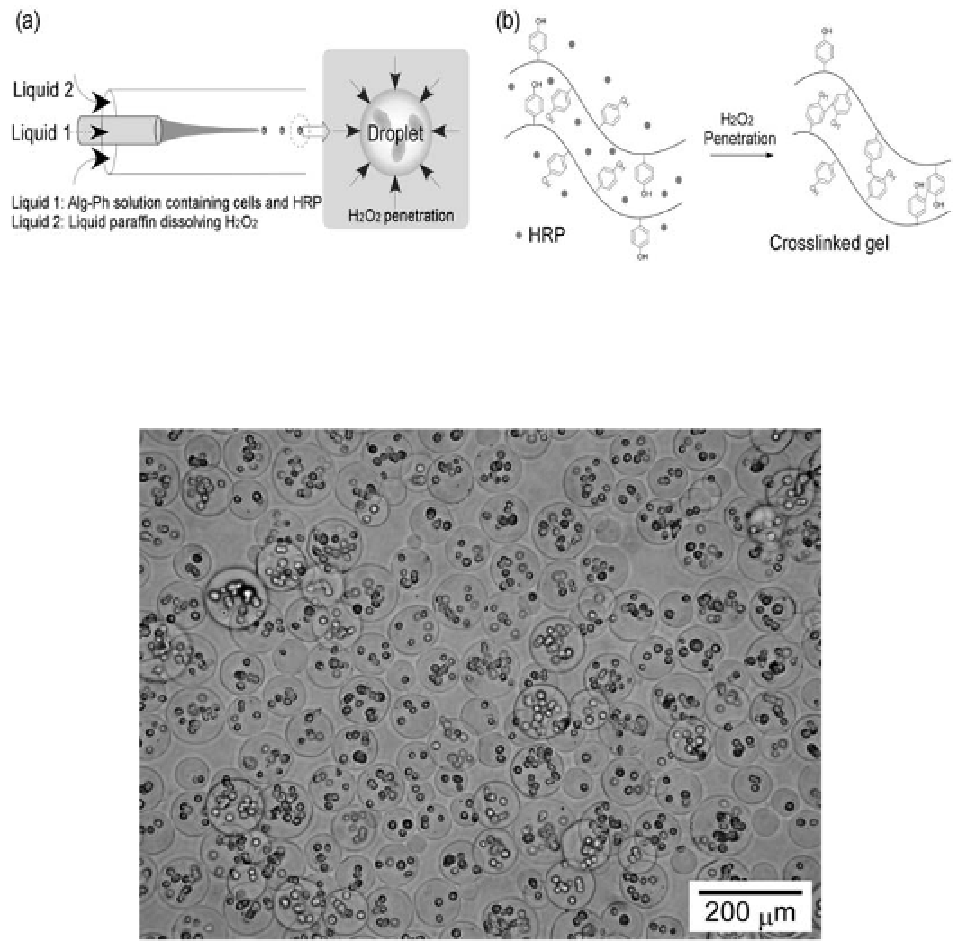Biomedical Engineering Reference
In-Depth Information
Figure 10. Schematic illustrations of (a) breakup of cell-enclosing droplets in a co-flowing stream of
liquid paraffin containing H
2
O
2
and HRP-catalyzed gelation and (b) HRP-catalyzed crosslink formation
using H
2
O
2
penetrating from the ambient liquid paraffin (Reproduced with permission, from Sakai S et
al. Biomacromolecules [39] @ 2007 American Chemical Society).
Figure 11. Micrograph of feline kidney cell-enclosing Alg-Ph microcapsules of 84.8 μm in diameter
(Reproduced with permission, from Sakai S et al. Biomacromolecules [39] @ 2007 American Chemical
Society).
One of the special concerns for the peroxidase-catalyzed encapsulation process would be
the potential for a harmful effect of H
2
O
2
on mammalian cells, because the cytotoxicity of
H
2
O
2
is well-known. However, we could not detect any harmful effects of H
2
O
2
using feline
kidney cells (CRFH cell line) [39]. We investigated the viability and growth profiles of the
cells recovered from the Alg-Ph microcapsules by degrading the Alg-Ph gel using alginate
lyase. The viability of the cells after 30 min of encapsulation was 91.8%. This value is almost
the same as that measured for the cells enclosed in non-gelated droplets of sodium-alginate
solution [28]. In addition, the recovered cells adhered, spread and grew on a cell culture dish
in the same way as cells seeded using a general subculture protocol (Figure 12). It was
unexpected that these promising cytotoxicity results were obtained. A gradual and slight
quantity of penetration of H
2
O
2
from the ambient liquid paraffin into the droplets with
dissolved HRP and the immediate consumption of the H
2
O
2
by the HRP-catalyzed oxidative

